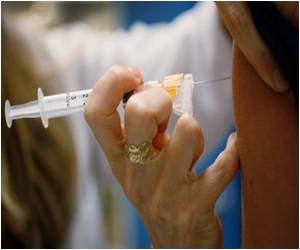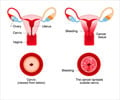Two studies published in BioMed examine the cost of delivering the human papillomavirus (HPV) vaccine to primary school girls in Tanzania.

Information is lacking on large-scale, country-wide implementation costs of vaccine delivery. With this in mind, in the first paper, lead author Wilm Quentin from the Technical University in Berlin, and co-authors from the London School of Hygiene & Tropical Medicine, the National Institute for Medical Research in Tanzania and the World Health Organization (WHO) estimated the costs of a school-based HPV vaccine project that compared two different vaccine delivery strategies: class-based and age-based vaccination with health centre vaccination for those that missed a dose at school[1]. This study was implemented in randomly selected schools across 3 districts in Tanzania. The study also modelled incremental scaled-up costs of a regional vaccination program. Quentin et al found that, in general, costs for class-based delivery rather than age-based delivery were lower, and the economic scaled-up costs for Tanzania's Mwanza region were an estimated US$1.3 million (approx. US$9.76 per fully immunized girl, excluding vaccine costs).
In a second study, Raymond Hutubessy from the WHO and colleagues tested WHO new Cervical Cancer Prevention and Control Costing (C4P) tool over a five-year planning period. This tool assists low-and middle-income countries with planning their HPV vaccine programs and estimates the incremental costs to the health system of vaccinating adolescent girls through schools, health facilities and outreach-based strategies. The most important costs of service delivery were social mobilization, education and communication and operational costs such as training, health personnel time, vaccination cards, stationery, supervision and monitoring. It was estimated that the vaccine could be delivered at US$12.40 per fully immunized girl in terms of economic costs, again excluding vaccine costs. The authors noted that, when countries expand their routine immunization schedules with new vaccines to new target populations, as is the case with HPV vaccine, they face initial start-up costs to fund pre-introduction activities such as training, not to mention ensuring that the vaccine is delivered on an ongoing basis. However, after introduction, costs would be cheaper and make HPV vaccination even more affordable. Hutubessy commented "These figures will enable governments to plan ahead so that they can adequately secure the financial resources required to introduce HPV vaccination programs."
Hutubessy, who was an author on both papers, believes that the estimated costs of establishing a regional HPV vaccine program that delivers 3 doses of vaccine to girls at schools via phased national introduction in Tanzania can potentially pose financial and logistical challenges to the Ministry of Health of Tanzania. The estimates from both studies of US$9.76-12.40 per fully immunized girl, excluding vaccine costs, are higher than delivery costs of existing routine vaccination programs. At the same time he also believes that HPV vaccination programs will be more affordable and easier to implement in low resource settings compared to other preventive cervical cancer interventions such as population based screening programs. In addition, other studies have suggested that HPV vaccination at US$25 per fully-immunized girl would be very cost-effective in Eastern Africa.
Given the current challenges in achieving high coverage with cervical screening programmes in low income countries, HPV vaccination will be an important public health intervention for the prevention of cervical cancer. A further reduction in vaccine price and integration of HPV vaccination with other adolescent health interventions could improve the affordability and hence the cost-effectiveness of HPV vaccination programs, especially in low and middle income countries where the existing health systems are already stretched.
 MEDINDIA
MEDINDIA




 Email
Email









